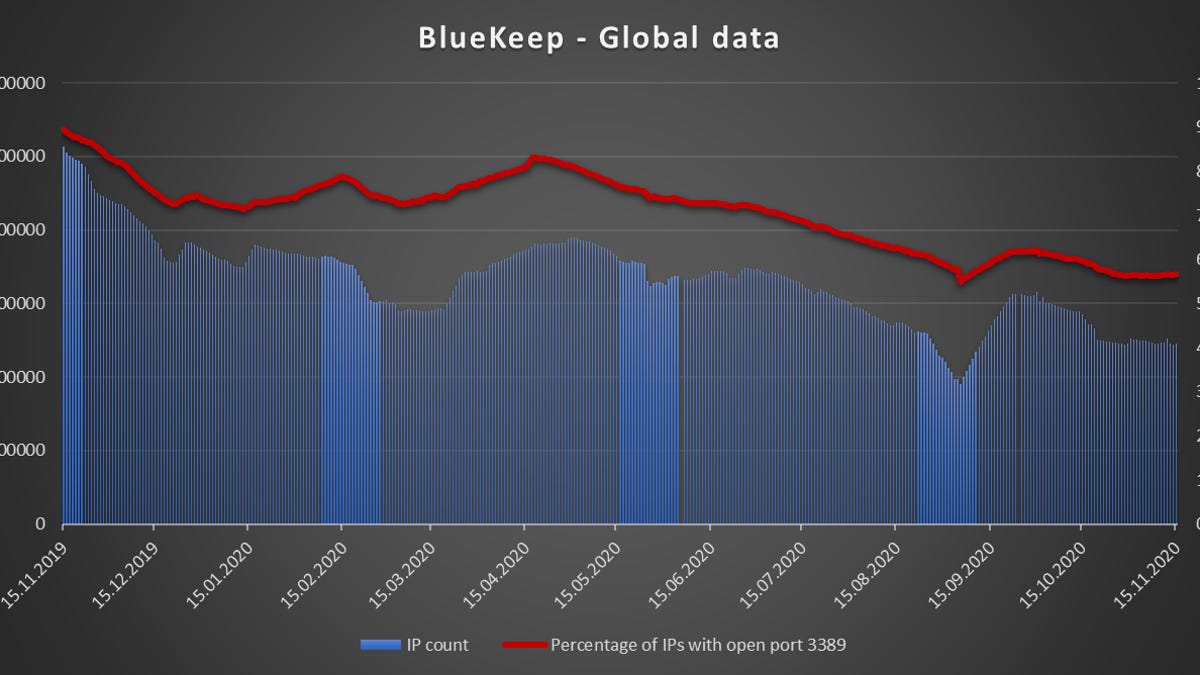silversurfer
Level 85
Thread author
Verified
Honorary Member
Top Poster
Content Creator
Malware Hunter
Well-known
- Aug 17, 2014
- 10,154
A year and a half after Microsoft disclosed the BlueKeep vulnerability impacting the Windows RDP service, more than 245,000 Windows systems still remain unpatched and vulnerable to attacks.
The number represents around 25% of the 950,000 systems that were initially discovered to be vulnerable to BlueKeep attacks during a first scan in May 2019.
Similarly, more than 103,000 Windows systems also remain vulnerable to SMBGhost, a vulnerability in the Server Message Block v3 (SMB) protocol that ships with recent versions of Windows, disclosed in March 2020.
Both vulnerabilities allow attackers to take over Windows systems remotely and are considered some of the most severe bugs disclosed in Windows over the past few years.
However, despite their severity, many systems have remained unpatched, according to research compiled over the past few weeks by SANS ISC handler Jan Kopriva [1, 2].
Kopriva says that BlueKeep and SMBGhost aren't the only major remotely-exploitable vulnerabilities that still have a strong presence online these days, exposing systems to attacks.
According to the Czech security researcher, there are still millions of internet-accessible systems that administrators have failed to patch and are vulnerable to remote takeovers. These include systems like IIS servers, Exim email agents, OpenSSL clients, and WordPress sites. [...]

More than 245,000 Windows systems still remain vulnerable to BlueKeep RDP bug
Millions of computers and servers across the globe remain unpatched for some of today's most dangerous bugs.
 www.zdnet.com
www.zdnet.com
